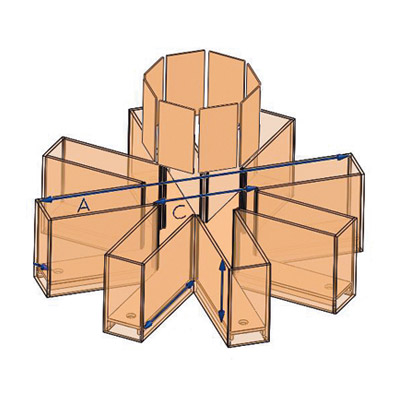The radial arm maze is a piece of equipment that has a circular center element which eight equally spaced arms extend from. These arms are elongated columns of equal distance and the far end may house a reward (such as food) which is not visible from the center compartment.
How does the Radial Arm Maze Test Work?
Rodents are put in the center area of the radial arm maze and are free to move around in search of the reward. During the experiment, the animal needs to remember which arms it has previously visited so that it does not enter arms which do not contain a food reward repeatedly.
The design of the maze is such that the animal is required to return to the center following each arm visit, meaning it is presented with the same eight options every time. The animal must remember which arm it has already chosen. The radial arm maze test measures two distinct forms of memory which are the reference memory and working memory.

Initial designs from the radial arm maze were created by Drs Olton and Samuelson in 1976 to test reference and working memory in rodents. The test was designed to model serial learning, meaning the way in which lists are recalled.
What is Reference Memory?
Radial arm maze tests are able to monitor reference memory, which is the capacity to recall information to do with the situation of spatial tasks. As such, when in a radial arm maze, the animal needs to recall their findings in each of the arms.
What is Working Memory?
The term working memory is used in reference to the temporary storage of information surrounding spatial tasks. In contrast with long-term memory, working memory is a limited holding of information which is employed in tasks such as the radial arm maze. As testing in the radial arm maze is carried out across one session, or sessions in quick succession, it is a helpful test for both refence and working memory.
The radial arm maze has been used extensively for memory testing with a range of conditions and factors such as the impact of psychoactive drugs and medications in addition to neurological conditions such as autism spectrum disorder and brain injuries. The radial arm maze has also been used to characterize the basic functions of different areas of the brain.
The Radial Arm Maze from San Diego Instruments
At San Diego Instruments, we offer an eight-arm radial maze which is ideal for spatial learning and memory tasks in rodents. Available in a range of colors, and with manual entry doors to close off particular arms, our radial arm maze is both intuitive and simple-to-use. The maze is available in both rat and mouse models and is completely compatible with our ANY-maze video tracking system for easy integration.
If you would like to find out more about our radial arm maze, contact us today.